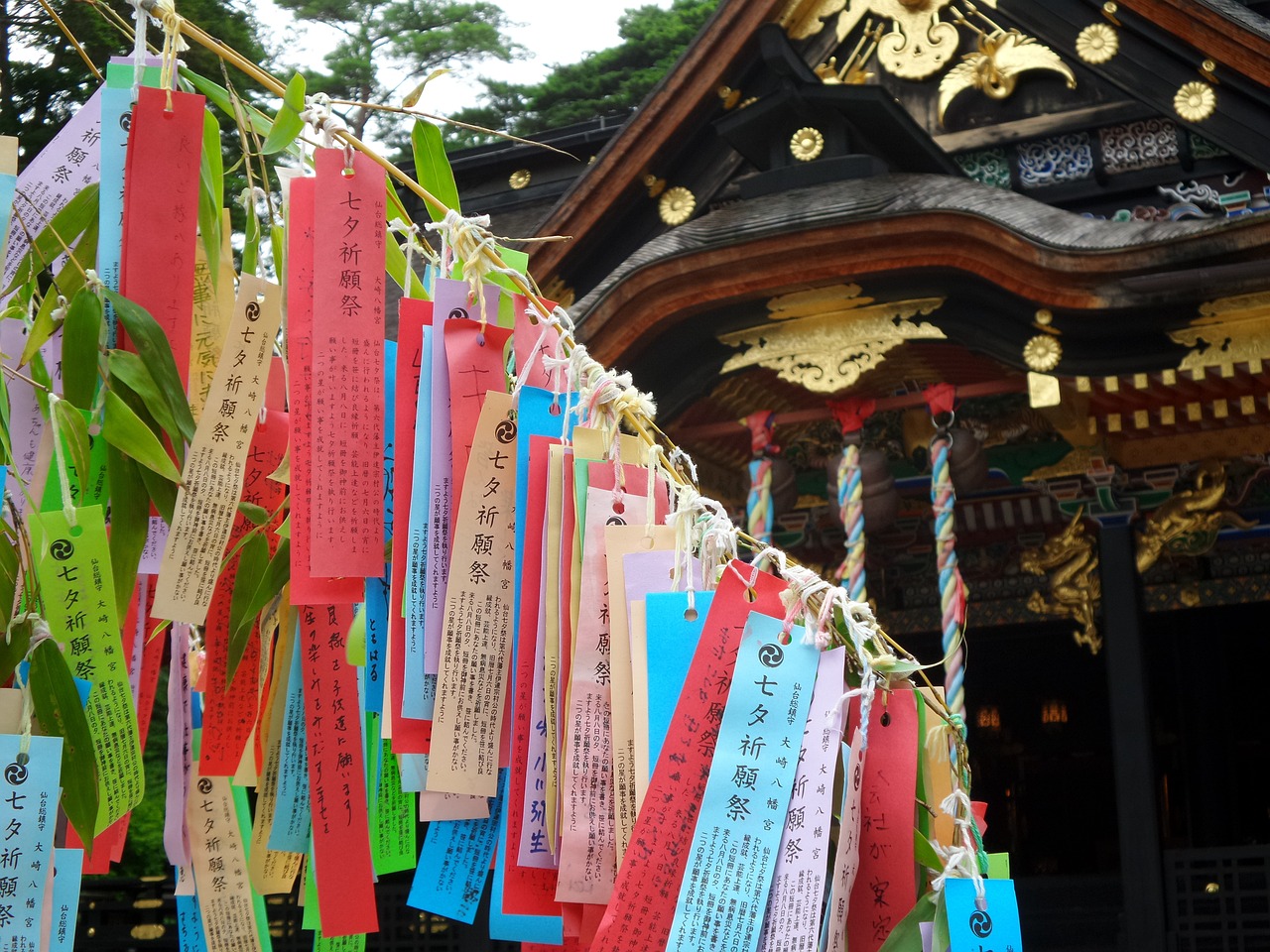仙台は、日本の宮城県に位置し、東北地方の中心都市として知られています。その歴史は非常に豊かで、時代ごとに様々な文化と出来事が積み重なっています。ここでは、仙台の歴史を時代ごとに紹介し、その魅力を再発見してみましょう。英語の多読練習に役立つように、各段落の後に英文も併記していますので、ぜひ活用してください。
仙台の起源
仙台の歴史は、古代から始まります。古代の仙台地域には、多くの縄文人が住んでいました。彼らは狩猟や漁業、農業を営み、豊かな自然環境の中で生活していました。
The history of Sendai begins in ancient times. In ancient Sendai, many Jomon people lived. They engaged in hunting, fishing, and farming, living in a rich natural environment.
中世の仙台
中世には、仙台は伊達氏の領地となりました。伊達氏はこの地域を治め、経済や文化の発展に寄与しました。伊達政宗はその中でも特に有名で、彼の治世下で仙台は大きく発展しました。1600年、関ヶ原の戦いの後、伊達政宗は仙台城を築き、仙台藩を開きました。
In the medieval period, Sendai became the territory of the Date clan. The Date clan governed this region, contributing to the development of its economy and culture. Date Masamune, one of the most famous figures, greatly developed Sendai during his reign. After the Battle of Sekigahara in 1600, Date Masamune built Sendai Castle and established the Sendai Domain.
仙台城は青葉山に位置し、その戦略的な立地から防御力に優れた城でした。城下町は整備され、商業や工業が発展しました。
Sendai Castle was located on Mount Aoba, making it a strategically defensible castle. The castle town was developed, leading to the growth of commerce and industry.
江戸時代の仙台
江戸時代、仙台は仙台藩の中心地として栄えました。仙台藩は東北地方で最も大きな藩の一つであり、政治、経済、文化の中心地となりました。この時期には、伊達氏による治水事業や農業の奨励が行われ、地域の発展が進みました。
During the Edo period, Sendai flourished as the center of the Sendai Domain. The Sendai Domain was one of the largest domains in the Tohoku region, becoming a hub of politics, economy, and culture. During this period, the Date clan undertook flood control projects and promoted agriculture, contributing to regional development.
また、伊達氏は学問や文化の振興にも力を入れ、多くの学者や文化人が仙台に集まりました。これにより、仙台は文化的にも発展しました。
The Date clan also emphasized the promotion of scholarship and culture, attracting many scholars and cultural figures to Sendai. As a result, Sendai developed culturally as well.
明治時代の仙台
明治時代になると、日本全体が急速に近代化し、仙台もその影響を受けました。1871年には廃藩置県により仙台藩は廃止され、仙台市が設置されました。この時期には鉄道や電気、通信などのインフラが整備され、仙台は東北地方の重要な交通の要所となりました。
In the Meiji period, Japan underwent rapid modernization, and Sendai was influenced by this trend. In 1871, the abolition of the han system led to the establishment of Sendai City. During this period, infrastructure such as railways, electricity, and communications were developed, making Sendai an important transportation hub in the Tohoku region.
また、東北大学の前身となる仙台医学校が設立され、仙台は学術の中心地としての地位を確立しました。これにより、多くの学生や研究者が仙台に集まり、知的な交流が盛んになりました。
Additionally, the Sendai Medical School, which later became Tohoku University, was established, cementing Sendai’s status as an academic center. This attracted many students and researchers to Sendai, fostering intellectual exchange.
大正時代から昭和時代の仙台
大正時代から昭和時代にかけて、仙台はさらに発展を遂げました。特に昭和初期には、都市の拡大とともに人口も増加し、経済活動が活発になりました。しかし、太平洋戦争中には空襲による被害を受け、多くの建物が破壊されました。
From the Taisho period to the Showa period, Sendai continued to develop. Especially in the early Showa period, the city’s expansion and population growth led to increased economic activity. However, during World War II, Sendai suffered damage from air raids, destroying many buildings.
戦後、仙台は復興と再建を進めました。インフラの整備と経済の再建が進み、仙台は再び東北地方の中心都市としての地位を確立しました。また、1964年の東京オリンピックではサッカーの試合が仙台で開催され、国際的な注目を集めました。
After the war, Sendai focused on recovery and reconstruction. Infrastructure development and economic reconstruction progressed, reestablishing Sendai as the central city of the Tohoku region. During the 1964 Tokyo Olympics, soccer matches were held in Sendai, attracting international attention.
現代の仙台
現在の仙台は、東北地方の政治、経済、文化の中心として栄え続けています。市内には多くの大学や研究機関があり、教育と研究の拠点としても重要な役割を果たしています。また、仙台は「杜の都」としても知られ、美しい自然環境と調和した都市景観が特徴です。
Today, Sendai continues to thrive as the political, economic, and cultural center of the Tohoku region. The city is home to many universities and research institutions, playing an important role as a hub of education and research. Sendai is also known as the “City of Trees,” characterized by its beautiful natural environment and harmonious urban landscape.
仙台には、青葉城址、瑞鳳殿、仙台市博物館など、多くの観光スポットがあります。これらのスポットは、仙台の歴史と文化を体感できる場所として、多くの観光客に人気です。
Sendai has many tourist attractions, such as the ruins of Aoba Castle, Zuihoden, and Sendai City Museum. These spots are popular with tourists as places where they can experience the history and culture of Sendai.
祭りとイベント
仙台では、多くの伝統的な祭りやイベントが行われます。以下に、代表的な祭りとイベントをいくつか紹介します。
Many traditional festivals and events are held in Sendai. Here are some representative festivals and events.
仙台七夕まつり
仙台七夕まつりは、毎年8月に開催される仙台市最大の祭りです。色とりどりの七夕飾りが街中を彩り、多くの観光客が訪れます。
The Sendai Tanabata Festival, held every August, is the largest festival in Sendai City. Colorful Tanabata decorations adorn the city, attracting many tourists.
仙台青葉まつり
仙台青葉まつりは、毎年5月に開催される祭りで、伊達政宗公を称えるパレードや伝統的な踊りが行われます。
The Sendai Aoba Festival, held every May, features a parade honoring Date Masamune and traditional dances.
仙台光のページェント
仙台光のページェントは、毎年12月に開催されるイルミネーションイベントです。市内の並木道が美しい光で彩られ、多くの人々が訪れます。
The Sendai Pageant of Starlight, held every December, is an illumination event. The tree-lined streets in the city are beautifully lit up, attracting many visitors.
仙台の食文化
仙台の食文化は、豊かな自然環境と歴史に根ざしています。以下に、仙台で楽しめる代表的な料理をいくつか紹介します。
Sendai’s food culture is rooted in its rich natural environment and history. Here are some representative dishes you can enjoy in Sendai.
牛タン
牛タンは、仙台の名物料理で、厚切りの牛タンを炭火で焼いたものです。その風味豊かな味わいが人気です。
Gyutan, grilled beef tongue, is a specialty of Sendai. Its rich flavor is very popular.
笹かまぼこ
笹かまぼこは、笹の葉の形をした魚のすり身を使った食品で、仙台の伝統的な名産品です。
Sasa Kamaboko is a traditional specialty of Sendai, made from fish paste shaped like bamboo leaves.
ずんだ餅
ずんだ餅は、枝豆をすりつぶした「ずんだ」を餅に乗せたもので、仙台の郷土料理です。
Zunda Mochi is a local dish of Sendai, consisting of mochi topped with sweetened mashed edamame called “zunda.”
仙台の観光スポット
仙台には、歴史的な名所や自然の美しいスポットが数多くあります。以下に、仙台で訪れるべき代表的な観光スポットをいくつか紹介します。
Sendai has many historical sites and beautiful natural spots. Here are some representative tourist spots to visit in Sendai.
青葉城址
青葉城址は、仙台城の跡地で、仙台市内を一望できる絶景スポットです。伊達政宗像があり、歴史を感じることができます。
The Aoba Castle ruins are the site of Sendai Castle and offer a spectacular view of the city. There is a statue of Date Masamune, giving a sense of the history.
瑞鳳殿
瑞鳳殿は、伊達政宗の霊廟で、美しい建築と庭園が特徴です。四季折々の風景が楽しめます。
Zuihoden is the mausoleum of Date Masamune, characterized by its beautiful architecture and gardens. You can enjoy the scenery in all seasons.
仙台市博物館
仙台市博物館は、仙台の歴史と文化を学べる博物館で、伊達家の貴重な資料が展示されています。
Sendai City Museum is a museum where you can learn about the history and culture of Sendai, with valuable artifacts from the Date family on display.
八木山動物公園
八木山動物公園は、仙台市内にある動物園で、多くの動物たちと触れ合うことができます。家族連れにも人気のスポットです。
Yagiyama Zoological Park is a zoo in Sendai where you can interact with many animals. It is a popular spot for families.
秋保温泉
秋保温泉は、仙台市内にある温泉地で、リラックスできる温泉宿が数多くあります。美しい自然に囲まれて温泉を楽しむことができます。
Akiu Onsen is a hot spring resort in Sendai with many relaxing hot spring inns. You can enjoy the hot springs surrounded by beautiful nature.
参考リンク
以下のリンクを参照すると、仙台の歴史や観光スポットについてさらに詳しく学ぶことができます。
Here are some links to further learn about Sendai’s history and tourist spots:
以上が、仙台の歴史と文化についての長文記事です。これで仙台の魅力を多角的に紹介し、歴史と現代の文化を織り交ぜた内容となっています。英語の多読練習にも役立てていただければ幸いです。

コメント